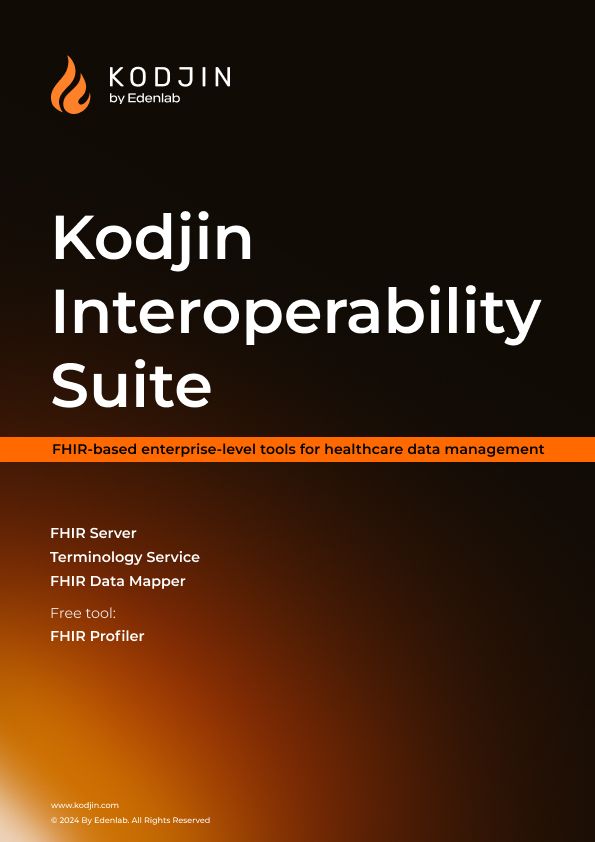Virtual reality in healthcare differs fundamentally from its applications in other fields. The healthcare industry, with its unique regulations and culture, may not readily embrace VR. However, this does not impede the development of new experiences based on virtual reality. Virtual reality used in healthcare facilitates communication, enhances patient experiences, and improves overall quality of life. Integrating VR with medications, therapies, and treatments can yield promising results in real-time patient care and long-term treatment plans.
However, using VR in healthcare requires a unique and collaborative approach from healthcare stakeholders. In this article, we’ll discuss the main challenges of VR in healthcare and suggest an out-of-the-box solution for harnessing the power of VR to revolutionize the way they diagnose, treat, and support patients, ultimately shaping the future of healthcare delivery.
BENEFITS OF VIRTUAL REALITY IN HEALTHCARE
Below, we will examine the multifaceted benefits of VR for the healthcare sector, shedding light on how it’s reshaping procedures, treatment modalities, and patient experiences.
Pain Reduction and Therapeutic Applications
A significant VR technology advantage in healthcare is its ability to diminish pain perception. VR can become an effective tool for pain management, providing distraction and relief during medical procedures. Moreover, VR has shown promise in therapeutic applications, such as exposure therapy, phobias, anxieties, and post-traumatic stress disorders.
For example, a study conducted on 30 patients with chronic pain showed a statistically significant effect of pain reduction during the VR session. Participants reported a 60% reduction in pain compared to before the VR session. Furthermore, there was a 33% decrease in pain between the pre- and post-VR conditions, indicating that the pain reduction effect lasted beyond the VR session. The findings suggest that immersive VR sessions can have a positive and lasting impact on reducing pain in individuals with chronic pain.
Surgical Planning and Practice
VR simulations have revolutionized surgical planning and practice. Surgeons can now immerse themselves in virtual environments that replicate the intricacies of real-life procedures. This allows them to refine their techniques, enhance precision, and improve patient safety. By practicing in a risk-free virtual setting, surgeons can gain invaluable experience before performing actual surgeries.
The evaluation of VR for surgical planning on two liver tumor resections showed participants who used a VR prototype for surgical planning reported an improved spatial understanding of anatomical structures and better identification of anatomical variants. The average time taken for planning the cases in VR was 14.3 minutes. The results suggest VR has the potential to enhance surgery and improve patient safety, indicating the positive impact of VR in surgical planning and practice.
3D Radiological Imaging
Virtual reality technology in healthcare opens new doors for visualizing and interacting with three-dimensional radiological images. Healthcare professionals can now examine complex anatomical structures in a more intuitive and immersive manner. This enhanced visualization improves diagnostic accuracy, aids in treatment planning, and enhances patient understanding of their conditions.
While examining the impact of 3D virtual reality radiography practice on student performance in clinical practice, researchers discovered the positive impact of immersive 3D VR simulation-based learning on the performance of first-year radiography students in the clinical setting. The VR-trained students outperformed the control group across multiple assessment criteria, including patient positioning for X-rays, selecting exposure factors, image appraisal of patient positioning, and image appraisal of image quality.
The VR-trained students performed better across 20 out of 22 assessment criteria compared to the control group. The differences in performance were significant, with higher proportions of VR-trained students ranked as ‘very good’ or ‘excellent’ in the mentioned criteria. For instance, there was a 19% difference in patient positioning for X-rays, a 12% difference in selecting exposure factors, a 27% difference in image appraisal of patient positioning, and an 18% difference in image appraisal of image quality. These improvements highlight the efficacy of VR in facilitating a better understanding and application of radiography skills.
Medical Education and Training
VR has revolutionized medical education and training by providing immersive and realistic learning environments. Medical students can now engage in simulated clinical scenarios, allowing them to practice decision-making, hone their skills, and gain hands-on experience in a controlled setting. By bridging the gap between theory and practice, VR empowers future healthcare professionals to deliver better patient care.
The research on virtual reality application in medical education showed the positive impact of using VR, specifically for teaching tendon suturing. The long-term follow-up study showed medical students who experienced VR teaching had more determined career pursuits, active willingness to learn, better evaluations from teachers during surgical clinical practice, and higher scores in physical examination, suturing, knotting, and image reading in the Objective Structured Clinical Examination (OSCE) compared to those in the control group.
Despite the numerous advantages of VR in healthcare and its proven effectiveness, including pain reduction, surgical planning and practice, and 3D radiological imaging, there are significant challenges the healthcare community must overcome to fully harness the potential of VR.
CHALLENGES OF VIRTUAL REALITY IN HEALTHCARE
Technical Limitations: VR systems face various technical constraints. Factors like the size of the equipment, limited immersion capabilities of mobile platforms, and device specifications pose challenges in different clinical settings. Ongoing efforts are being made to address these limitations, but technological advancements are necessary.
Organizational Issues: The healthcare industry is known for its complex bureaucracy and slow adoption of new technologies. Integration with existing healthcare software, compatibility issues, procurement procedures, and access to infrastructure can hinder the implementation of VR in healthcare. Overcoming these organizational barriers requires careful planning and collaboration.
Lack of Knowledge/Research: While VR has gained recognition in gaming and entertainment, awareness of its medical applications and the research behind them remains limited. Educating healthcare providers and patients about the virtual reality benefits in healthcare is crucial. Disseminating knowledge and creating awareness can foster greater acceptance and understanding of VR’s role in healthcare.
Funding and Financial Support: Developing VR-based educational and therapeutic programs requires substantial financial investment. The high cost of content production and the need for ongoing support can pose challenges. Securing adequate funding and financial support for VR projects is essential to ensure their successful implementation.
Safety and Ethical Considerations: VR programs must adhere to safety parameters and guidelines. The supervision of specialists and careful monitoring of users’ health are vital. Diagnostic and preventive plans should be in place to address any behavioral changes that may occur after using VR applications. It is important to emphasize that VR should complement traditional methods rather than replace them.
Evaluation and Standardization: Establishing science-based standards and conducting comprehensive evaluations are essential for evaluating the effectiveness and safety of VR systems. Continual evaluation, both in lab settings and in clinical practice, is crucial to ensure optimal outcomes. Clear guidelines and rules should outline the responsibilities of program producers and project teams.
ADVANCING VIRTUAL REALITY FOR HEALTHCARE WITH FHIR
Leveraging new technologies and virtual reality in the healthcare industry is slow-moving since the industry is notoriously complex. Integrating VR into existing healthcare software, addressing compatibility issues, navigating procurement procedures, and ensuring access to necessary infrastructure can be challenging.
To overcome these organizational barriers, careful planning and collaboration are essential. In addition to the collaborative efforts mentioned above, creating a universal base for VR that simplifies the user experience and enables seamless interoperability among various VR healthcare solutions is crucial. The Fast Healthcare Interoperability Resources (FHIR) standard is a powerful solution that can help overcome the challenges of VR in healthcare.
FHIR for seamless data exchange
FHIR provides a standardized framework for exchanging, integrating, and managing healthcare data across different systems and platforms. By adopting the FHIR standard, VR applications can communicate and share data in a consistent and interoperable manner. This promotes integrating VR technology in healthcare with existing healthcare software and enables seamless data exchange between VR systems and electronic health records (EHRs), clinical decision support systems, and other healthcare applications.
With FHIR, healthcare providers can access patient data from VR applications within their existing workflows, ensuring continuity of care and enabling more informed clinical decision-making. Patient information such as medical history, allergies, and medication records can be securely shared between VR systems and healthcare providers, facilitating personalized and targeted virtual interventions.
FHIR for surgeons
For clinicians or surgeons, utilizing FHIR data to deliver information to augmented reality (AR) systems can play a crucial role. As clinicians prepare for patient consultations or surgical procedures, they can leverage VR or AR systems to overlay relevant patient data onto their field of view.
AR glasses or headsets equipped with cameras and sensors enable clinicians to see virtual information, such as patient vital signs, lab results, and imaging scans, seamlessly integrated into their physical environment. To support this real-time data flow, it’s essential to implement FHIR server infrastructure that ensures secure and standardized access to patient data across devices. By delivering FHIR data to AR systems, clinicians can gain a comprehensive view of the patient’s condition and make informed decisions in real time.
PARTNER WITH EDENLAB TO HARNESS THE POWER OF VR IN HEALTHCARE
By focusing on interoperability and leveraging the FHIR standard, we can address the challenges of virtual reality (VR) in the healthcare market. To enhance data management, our platform employs advanced batch and stream processing techniques, ensuring real-time analysis and reporting. Establishing a common data exchange format allows VR systems to seamlessly integrate with existing healthcare software, facilitating the secure and efficient exchange of patient data.
Our team of certified FHIR experts will ensure this integration is smooth and compliant with the latest healthcare regulations and standards. By offering solutions tailored to individual healthcare providers’ needs, we aim to unlock the full potential of VR in medical practice, paving the way for enhanced patient experiences, more informed clinical decision-making, and a new frontier in medical training and therapy.






